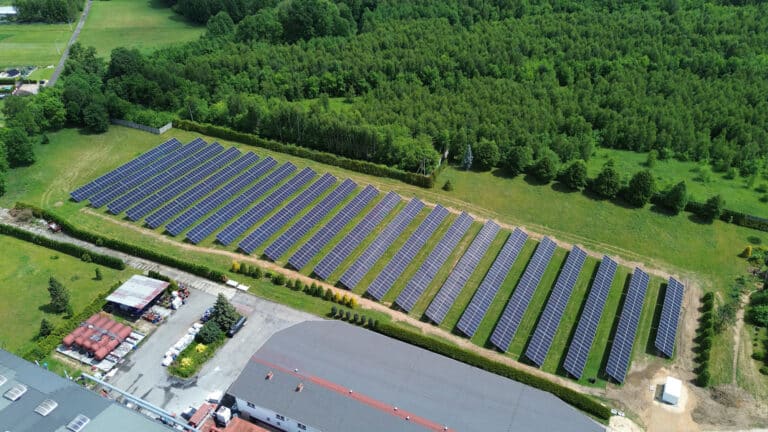Manufacturing exhibits fundamental scale-efficiency relationships that create unexpected carbon footprint dynamics. Recent analysis of over 25,000 industrial plants confirms that specific energy consumption decreases as production capacity increases¹. For carbon verification, this creates measurement challenges that standard approaches often miss.
The Hidden Carbon Measurement Problem
Scale efficiency creates a carbon accounting paradox that trips up even sophisticated sustainability teams. A manufacturer implementing best-in-class equipment whilst expanding capacity can simultaneously achieve dramatic efficiency improvements and face absolute emission increases, yet traditional carbon metrics often obscure the genuine environmental progress.
Consider a chemical plant doubling capacity with state-of-the-art equipment achieving 40% better energy efficiency per tonne. Absolute emissions might increase 20% whilst efficiency metrics show substantial improvement. This scenario represents genuine environmental leadership, doing significantly more with proportionally less carbon, yet conventional reporting frameworks struggle to communicate this achievement clearly.
Analysis across 25,000+ industrial plants confirms that specific energy consumption decreases as production capacity increases, though the magnitude varies significantly across industrial subsectors¹. These improvements stem from equipment physics; better thermal efficiency in larger vessels, reduced heat losses, improved process integration, alongside labour and overhead efficiencies that smaller facilities cannot replicate. Recognising these efficiency gains becomes crucial for meaningful environmental assessment.
The Verification Blind Spot
Carbon verification faces challenges when scale dynamics influence reported performance. A facility operating below optimal capacity shows inherently higher emissions intensity, not due to poor management but because of underutilised equipment designed for larger throughput.
This creates measurement complications during various scenarios:
- Facility ramp-up periods where new equipment hasn’t reached design capacity
- Market downturns where efficient large-scale equipment operates below optimal load
- Product mix changes that alter capacity utilisation patterns
- Seasonal variations that affect continuous process industries differently than batch operations
Standard verification approaches may not adequately distinguish between operational inefficiency and scale-related performance variations, potentially misattributing carbon performance differences.
Investment Cycles and Carbon Effects
Manufacturing’s capital intensity creates carbon footprint patterns that don’t align with simple annual reporting cycles. Large facility investments typically involve 20-40 year asset lifecycles, creating temporary emission spikes during construction followed by long periods of improved efficiency.
Global manufacturing investment reflects these scale dynamics. Between 1995-2015, capital formation in materials production increased substantially, with new facilities typically incorporating larger-scale, more efficient equipment². This investment pattern creates important carbon accounting challenges.
The carbon accounting challenge intensifies when companies pursue strategic consolidation. Shutting smaller, less efficient facilities whilst expanding optimally scaled operations can temporarily increase absolute emissions during the transition period, even whilst achieving superior long-term carbon performance per unit of output.
Carbon efficiency approaches better capture the environmental value of these strategic decisions. When consolidation delivers 50% efficiency improvements across the combined operation, this represents substantial environmental progress that absolute accounting may obscure during transition periods. Efficiency metrics reveal the genuine environmental leadership embedded in these complex operational improvements.
Many decarbonisation technologies exhibit similar scale requirements. Industrial heat pumps, hydrogen production systems, and carbon capture equipment achieve economic viability primarily where substantial energy consumption justifies capital deployment. This alignment between operational scale and decarbonisation technology creates strategic advantages that efficiency-focused verification can appropriately recognise.
Verification Implications
Manufacturing scale dynamics require verification approaches that can distinguish between efficiency improvements and operational scaling effects. This matters particularly for companies in growth phases or undergoing facility optimisation, where traditional absolute metrics may penalise genuine environmental progress.
Carbon efficiency methodologies offer superior insight into these scenarios by measuring emissions relative to economic output or production volume. When a manufacturer achieves 40% efficiency improvements whilst doubling production, carbon efficiency metrics correctly identify this as significant environmental progress, delivering twice the economic value with only 20% more emissions.
This approach aligns verification with actual manufacturing achievements. A facility expansion that improves carbon efficiency by 30% represents genuine environmental leadership, regardless of absolute emission changes. Carbon efficiency assessment recognises the fundamental manufacturing reality that environmental progress often involves doing substantially more with proportionally less carbon input.
Meaningful carbon verification in manufacturing requires understanding the relationship between production scale, equipment utilisation, and carbon intensity. Without this context, assessment approaches may miss genuine efficiency improvements or penalise companies for operational decisions that deliver superior long-term environmental performance per unit of economic output.
The challenge extends to performance benchmarking across different facility scales and operating contexts. Carbon efficiency frameworks enable more sophisticated comparison by evaluating environmental performance relative to economic output, providing clearer insight into actual environmental management effectiveness than scale-blind absolute comparisons.
Understanding how scale influences carbon footprints, combined with efficiency-focused verification approaches, enables assessment that recognises legitimate environmental achievements whilst distinguishing operational excellence from structural advantages. This nuanced evaluation better serves manufacturers pursuing both environmental leadership and operational competitiveness.
References:
- ScienceDirect (2023). “The effect of ‘energy of scale’ on the energy consumption in different industrial sectors”
- Nature Geoscience (2021). “Increased carbon footprint of materials production driven by rise in investments”


